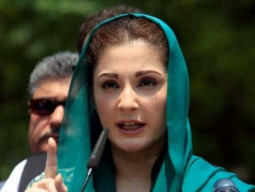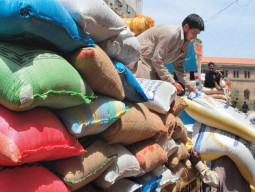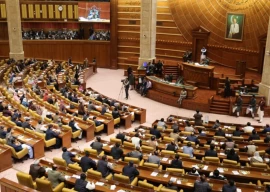
The Annual Status of Education Report (ASER) 2012 for Punjab indicates a disparity between the northern and southern districts of the province especially in terms of enrollment of students between the ages of six and 16.
The findings were shared at the provincial launch of the ASER 2012 Punjab report at the Children’s Library Complex on Wednesday.
As many as 10 out of the 36 rural districts of Punjab, which have been surveyed this year, indicate an out-of-school children (OOSC) percentage of greater than 20%. These districts include Bahawalanagar, Lodhran, Bhawalpur, Dera Ghazi Khan, Chiniot, Muzaffargarh, Pakpattan, Bhakkar with Rajanpur and Rahim Yar Khan indicating the highest OOSC percentage (for children between the ages of six and 16) of 31.7% and 34.8% respectively.
A Majority of these districts fall in the south of Punjab.
The ASER 2012 survey has included all 36 districts of Punjab. Only 28 districts were covered in last year’s report. The primary data for the report comes from 21,478 households and 1,074 villages across the province. The learning survey includes data on as many as 58,943 children in the three to 16 year group.
Surveying a total of 1, 756 schools out of which 1,066 were government schools and 690 were private, the survey reports that Punjab has an overall school enrollment of approximately 84% for the children between the ages of six and 16. The report points that out of the nearly 16% out-of-school children, almost 7% are drop-outs while another 8.6% have never been enrolled in a school. “Children who have never been enrolled in a school seem to be the greater challenge for the government than the drop-outs,” said Idara-e-Taleem-o-Aagahi Programme Director Baela Raza Jamil.
The learning levels in Punjab were better compared to other provinces. The Urdu learning level assessments indicates that 66.7% of children in grade five can read a story, placing Punjab in the top rank amongst the four provinces and Azad Jammu and Kashmir, Islamabad Capital Territory and Federally Administered Tribal Areas (FATA). Similarly, the English learning levels assessments for Punjab indicated that 61.3% of children in grade five can read sentences, placing Punjab third in the overall ranking of the provinces and regions. In arithmetic learning level assessments of grade five, Punjab stood second with 55.6% students being able to do three digits division.
Within Punjab, Rajanpur, which has one of the lowest OOSC percentage in the province, ranks 11th in the arithmetic learning level assessments and 12th in Urdu learning level assessments. But it stands 23rd in English learning level assessments. Rawalpindi district, which has the lowest OOSC percentage in the province at 2.7%, ranks 27th in Urdu learning levels assessments, 25th in English learning level assessments and 10th in arithmetic learning level assessments.
“The purpose of learning assessments is to focus on the quality of education provided to children,” said Jamil.
According to the report, the students in private schools performed better in assessments than those in government schools. The pattern was observed across subjects and different school grades. The report also pointed out that around 34% of children in private schools take paid tuition as opposed to 17% of children in government schools. The trend of paid tuition rose from 33% in grade 1 to 38% in grade 10 across all private school going children surveyed. “There is a parallel shadow system where children are going for learning,” said Jamil.
The sample households in the survey had almost 33% mothers who had finished primary school and 56% of fathers had completed theirs. The survey report states that Urdu was the most preferred language of instruction for children in schools, with 56% of households preferring Urdu. The report identifyied 19 different languages being used in the households surveyed in Punjab, the most popular were Punjabi, Seraiki and Urdu.
The survey also included the urban districts of Lahore and Multan. Lahore has an OOSC percentage of 6.5% while Multan stands at 10.6% in the six to 16 years of age group. It also indicates that the enrollment of boys in both government and private schools is greater in Lahore. Boys’ enrollment is higher in private schools in Multan. However, in government schools in Multan, boys and girls have an equal enrollment fraction. The trend of taking up paid tuition is more marked in private schools in both Lahore and Multan urban districts. “The private school picture isn’t all that rosy after all,” said Jamil.
The Punjab launch will be followed by similar launches in other provinces in the coming days. The national report was launched on January 28 in Islamabad.
House by house
ASER is a household based survey conducted across the nation by the South Asia Forum for Education (SAFED) and managed by the Idara-e-Taleem-o-Aagahi (ITA) in collaboration with its partners (Foundation Open Society Institute (FOSI), Department for International Development (DFID), British Council, National Commission for Human Development (NCHD), Sindh Education Foundation, Bacha Khan Education Foundation and Oxfam).
Published in The Express Tribune, January 31st, 2013.


















COMMENTS
Comments are moderated and generally will be posted if they are on-topic and not abusive.
For more information, please see our Comments FAQ